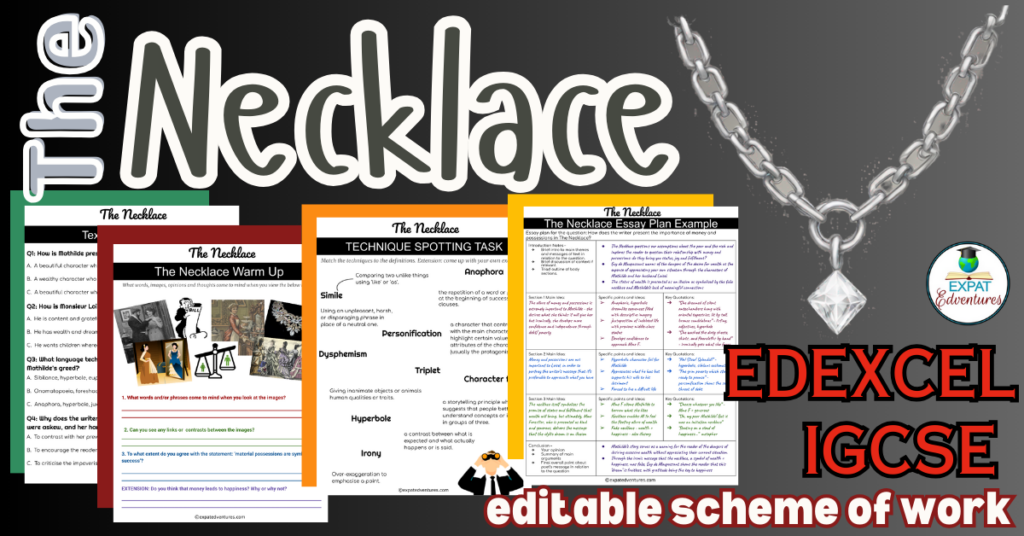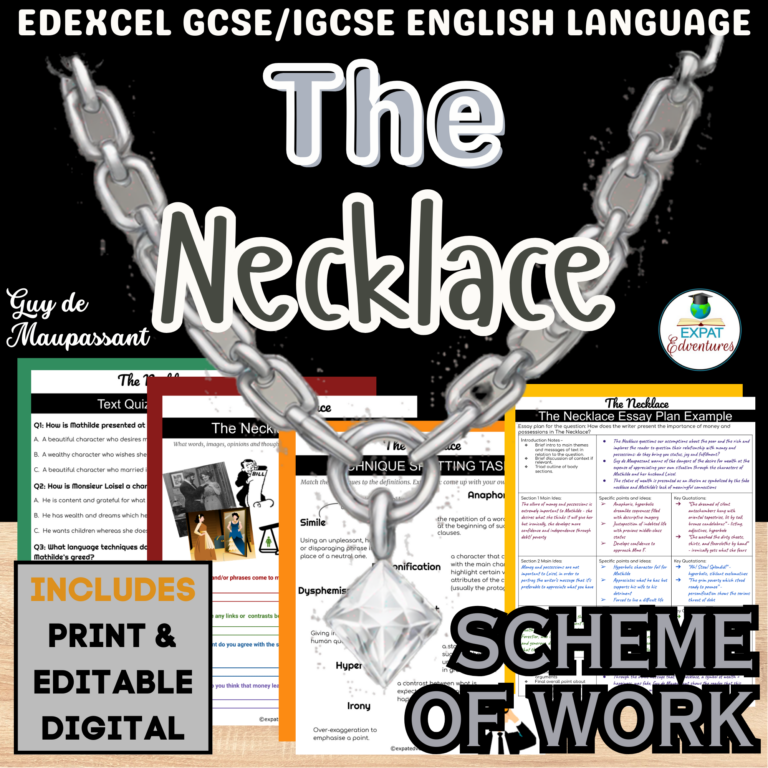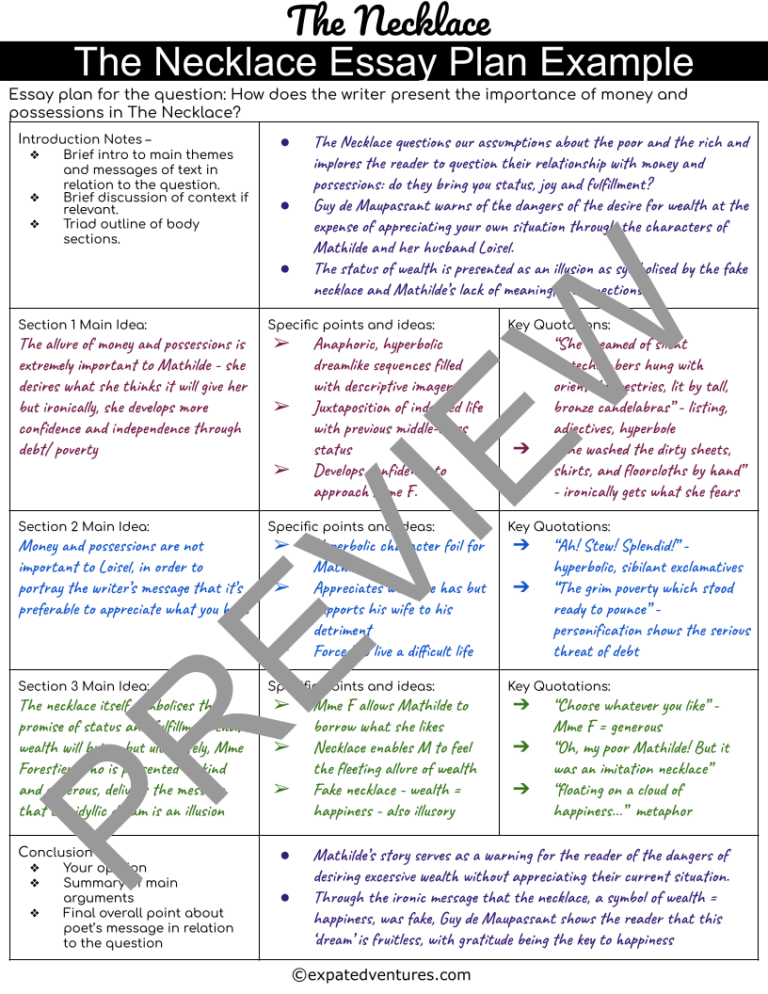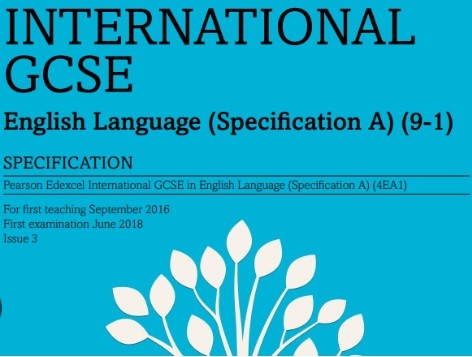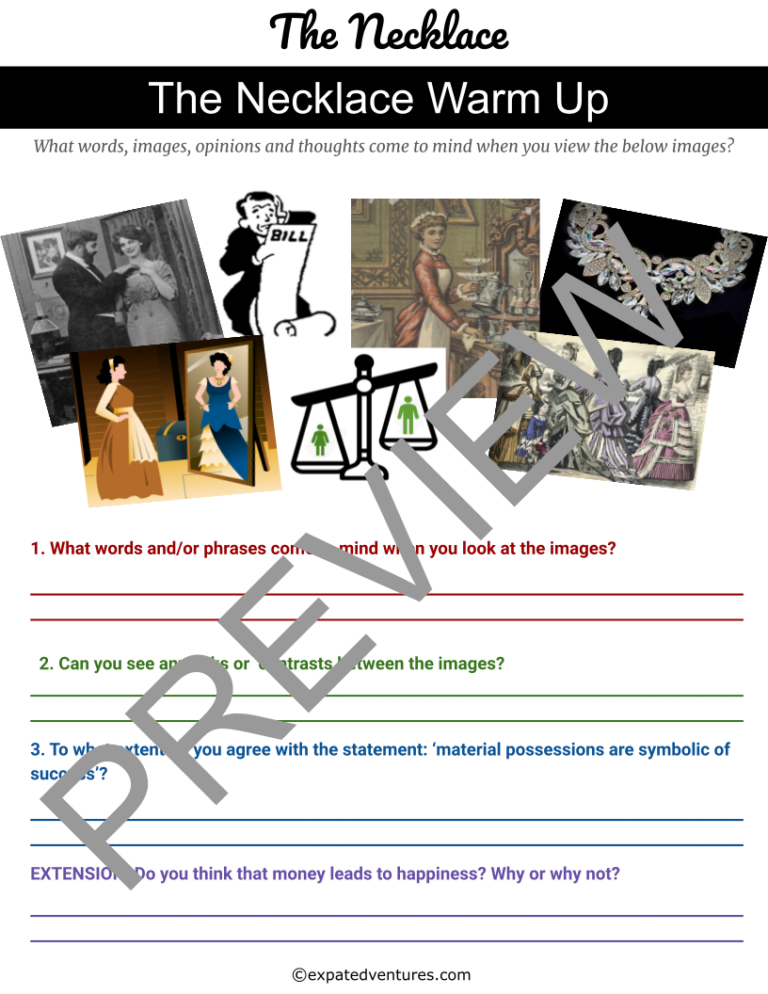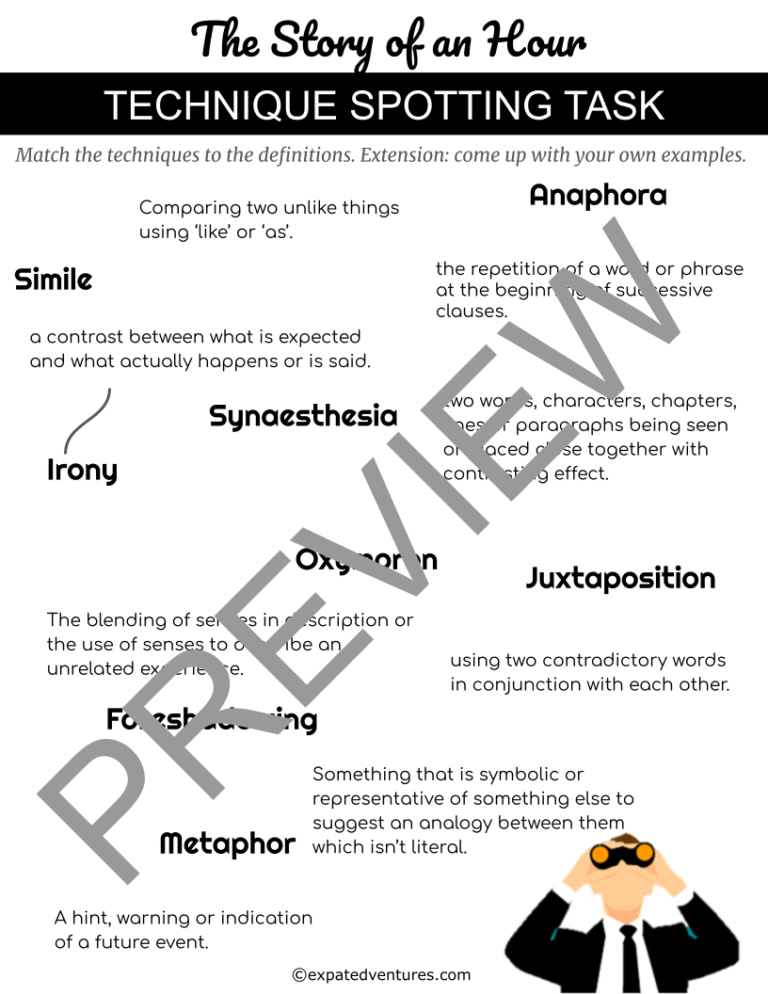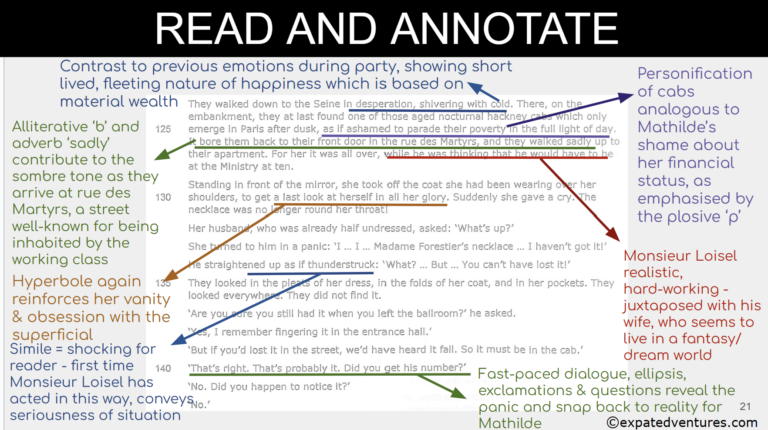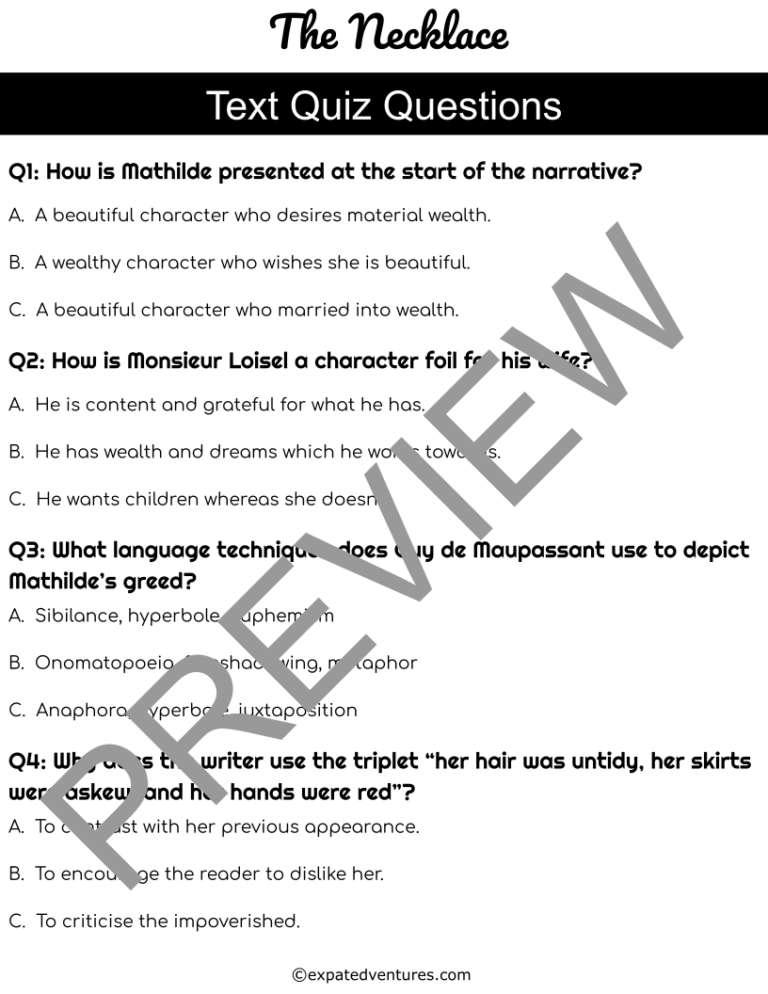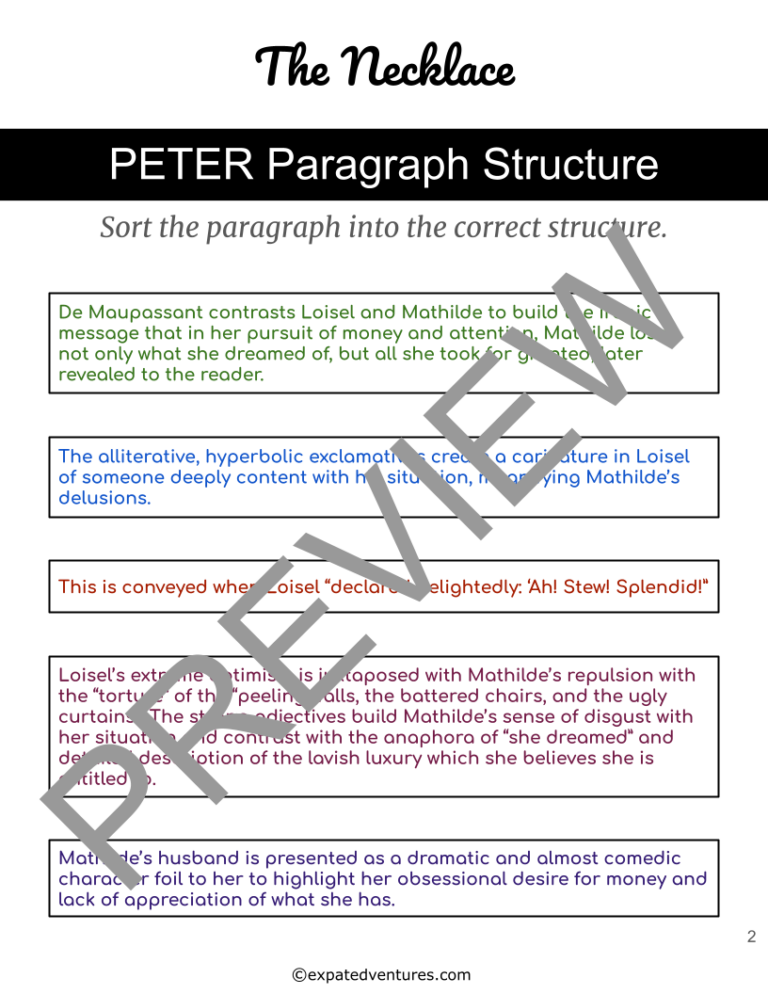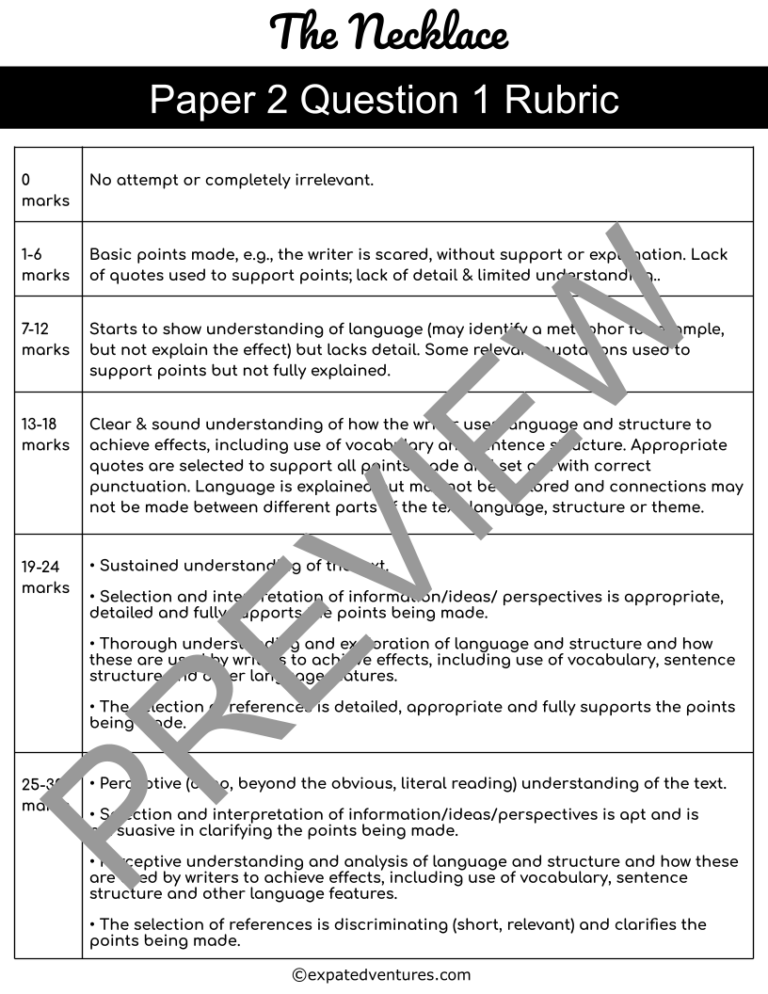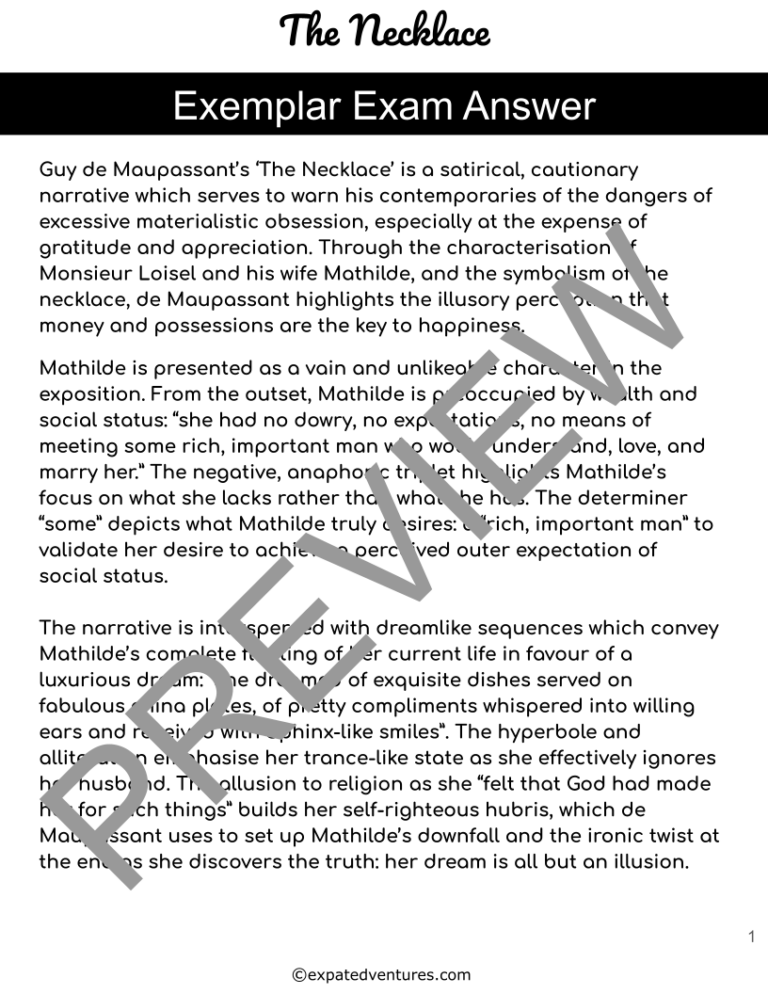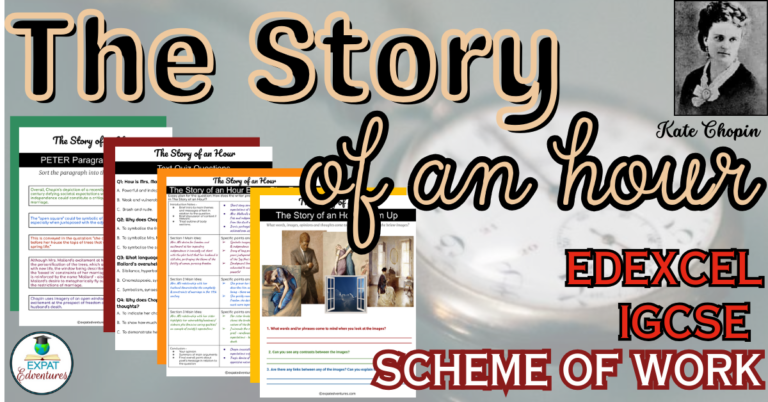The text ‘The Necklace’ by Guy de Maupassant is currently taught on the Edexcel International GCSE English Language Paper 2 curriculum. It is one of the 10 prose and poetry anthology texts which students answer on for Question 1. This complete ‘The Necklace‘ IGCSE resources pack comes packaged in a cohesive scheme of work. It includes line-by-line annotations, quiz questions with an answer key, a mind mapping activity, rubric and an exemplar answer for students to mark.
The Necklace Summary
‘The Necklace’ by Guy de Maupassant tells the story of a vain and self-righteous female character, Mathilde Loisel. He warns his contemporaries about the dangers of excessive greed, especially at the expense of a peaceful contentment with one’s current situation. Set in the 1880s in Paris, France, the country was undergoing rapid industrial changes leading to a focus on wealth and consumerism.
Immediately, de Maupassant presents Mathilde as a character who feels that she is entitled to wealth. She is disappointed by her husband, Monsieur Loisel, who, embodying traits of gratitude and optimism, is an almost comedic character foil to his wife. Accordingly, she feels disappointed with her social status and dreams of a life of luxury.
However, when Monsieur Loisel receives an invitation to a ball, she doesn’t want to go because she doesn’t think she has anything appropriate to wear. Then, she visits her friend, Madame Forestier, and borrows a necklace from her. She enjoys the ball, lavishing in attention and the elusive status that she believes wealth grants.
Nonetheless, she loses the necklace and soon after, Mathilde and Loisel plunge into debt after replacing the necklace. After a decade of hard work and misery, they pay in full for the necklace. In an ironic twist, Mathilde sees Madame Forestier by chance, and Madame Forestier reveals that the necklace was fake.
The necklace symbolises wealth, in particular Mathilde’s yearning and obsession with materialistic possessions. Guy de Maupassant’s message to his readers is to highlight the illusion of wealth and social status and urge gratitude and acceptance instead of pining for money and possessions.
The Necklace IGCSE Scheme of Work
I’ve created a scheme of work for busy teachers to take your students step-by-step through the text. It contains everything from an engaging, thought-provoking starter, to quiz questions about the passage. There are also detailed annotations of the text and exam practice (rubric, mind mapping activity and example answer) for the 30-mark question on Language Paper 2. This The Necklace IGCSE resource contains editable Google slides, quizzes with answer keys, sample exam questions, a mind mapping activity and close textual annotations of the whole GCSE text. All activities are ready to download and print in PDF form or there are links for you to personalise them if you wish.
Edexcel IGCSE English Language Exam Paper 2
The 1 hour 30 minutes Edexcel IGCSE English Language Paper 2 exam is split into Section A and Section B. Section A is the reading assessment and candidates are presented with one of the 10 prose and poetry anthology texts. The prose texts are between 1.5 and 3.5 pages long and the texts are approximately 1 page. They have 1 30-mark question to answer, which is usually based on a broad theme from the selected text, such as death, strong emotions, sympathy or conflict. Furthermore, candidates are provided with 3 bullet points which give guidance as to what to include in the response.
Section B is an imaginative writing assessment. Candidates choose between three options, which are normally loosely based on the Section A text.
- Question 2 tends to be a personal question. For example, write about a time you overcame a challenge. The response can be real or imagined.
- Question 3 tends to give the title of a story, and candidates are required to write the story.
- Question 4 usually provides a set of 2-3 images which students may use as a stimulus to write a story.
Edexcel The Necklace Resources and Analysis
To introduce the text ‘The Necklace’, I ask students to discuss images related to the text. Then, they discuss for five minutes or so in pairs or small groups before we do class feedback. These The Necklace IGCSE resources contain images with ideas to discuss with students. As the text contains instances of symbolism and irony, this is an effective way for students to explore those less tangible ideas. For an extension or discussion activity, I ask students to explore comparisons and contrasts between the images and con. This helps them to explore ideas about how money and possessions are connected to status and fulfilment.
The Necklace Language and Structure Techniques
Before diving into the text, I quickly review language and structure techniques in the text so that they are fresh in students’ minds. Students match the definition and technique, which they can either copy, cut and paste or simply number. As an extension, students can write their own examples of the techniques. This is also a useful revision tool for any GCSE English exam. When they know the language techniques implicitly, they naturally refer to them in their analysis and raise their marks.
The Necklace line-by-line analysis
Before close textual analysis, I often ask students to do an initial reading for the tone and literal meaning. It is a fairly straightforward text for students to understand on a surface level – a story about what happens when Madame Loisel loses a necklace which she believes is expensive, which turns out to be a fake. The challenge comes in unpacking how Guy de Maupassant uses irony to present themes of wealth, marriage, and friendship. As well as that, de Maupassant explores the effects of debt on people’s lives. Close textual annotations are a way to support students to unpack these deeper meanings.
When it comes to closely analysing the lines of the text, there are a few ways of approaching the activity. You can read and annotate together with students completing the annotations in real time. Alternatively, you can split students into groups and ask each group to focus on a certain number of lines before feeding back to the class. Or you could read and discuss, then ask students to complete the annotations for homework.
There are many ways of approaching close textual analysis; I find that varying the method for different texts keeps students interested through the unit. This ‘The Necklace’ IGCSE resources pack contains detailed line-by-line annotations of the whole text.
Edexcel The Necklace IGCSE Quiz with Answer Key
After analysing the text, I do a quick AFL quiz with students to assess their understanding of the language and structure of the text. Then, it’s a good idea to introduce exam practice questions. Editable quiz questions for a straightforward low stakes multiple choice quiz with answers are available on the slides and in PDF form with these The Necklace IGCSE resources. Depending on your time and the nature of your class, you can do this as a whole class activity on the interactive whiteboard or hand out for students to do in pairs or individually.
The Necklace IGCSE Resources Past Paper Questions
Question 1 on the IGCSE English Language Paper 2 exam is a 30-mark question on one of the 10 anthology prose and poetry texts. You can find them in Part 2 of the anthology. Although it is one question, it is fairly high stakes as students don’t have anywhere to hide; they must perform on this question. I reinforce to them that they must know all 10 of the texts very well to write a detailed essay on just one of them in the exam.
There are some steps to take before asking students to write a response. Firstly, it may be useful to take students through the rubric so that they familiarise themselves with how the response is awarded. Then, you can take students through the example PETER paragraph (point, evidence, technique, explain, refer). If you wish, you can ask them to order the parts of the example paragraph, so they grapple with the concept of a cohesive paragraph. This way, there are scaffolds in place to support students to produce high quality responses. Also, you can demonstrate how the paragraph hits the mark scheme pointers, such as exploring techniques and use of vocabulary for effect. It also directly links to the question, which is something examiners look for.
In this The Necklace GCSE scheme of work, there is a rubric, paragraph structure and sorting activity so that students can see how to write a cohesive analytical paragraph. This is a useful way to ease hesitant students into writing a full analysis of the text.
The Necklace Planning a GCSE essay
Once students are comfortable with composing an evaluative paragraph, it’s a good time to move on to planning out a cohesive essay. In the resource pack, there is an essay planning scaffold, including sections for students to write notes and quotes on various themes and techniques in The Necklace. In addition, there is an example completed plan to show to students as a demonstration. The essay plan provides scaffolding for students’ ideas and helps to prevent repetitive or waffling responses.
Edexcel IGCSE The Necklace Exemplar Exam Answer
Included in these ‘The Necklace‘ IGCSE resources, I have provided an editable full-mark example answer for Question 1, worth 30 marks. I find it the most effective to ask students to have a go at answering first, do some peer or teacher marking of their answers, then present them with the full-mark response. Often, I find if students achieve a mark they are unhappy with, they ask ‘what do I have to do to increase my mark?’ Or, they might say ‘how do I make it better?’ These are great questions as they show engagement with the improvement process. This is when providing students with an exemplar analytical essay can help them ‘see’ exactly how to plug the gaps in their own response.
There are examiner’s comments in the notes section of the presentation about this response. Essentially, to be awarded full marks, there should be evidence of perceptive analysis. I explain to students that the answer goes beyond ‘obvious’ points and draws out the writer’s range of ideas and different possible interpretations of readers’ reactions. Consider whether the writer changes their perspective and how language and structure interconnect for effect. For example, a long syndetic list can also contain strong, emotive verbs. Quotations must be relevant to the points made for a student to achieve the top band of the mark scheme. Also, multiple quotations should be used throughout the response.
Edexcel GCSE English Language Imaginative Writing Practice
There are also a couple of writing prompts included in these The Necklace IGCSE resources. Time-permitting, this is an excellent text to base a creative or transactional writing piece around as it is so steeped in vivid imagery. You could have the students write an article, story or letter based on the text. This can help develop skills required for Section B of Paper 1 (Transactional Writing) and Section B of Paper 2 (Imaginative Writing), whilst increasing their engagement with the text The Necklace.
Edexcel English Language GCSE Revision
To sum up, some of the best techniques for teaching the 10 prose and poetry texts include:
- Hook students with an intriguing starter activity
- Use alternative methods to closely analyse and annotate the text
- Quiz students for quick AFL strategy to assess whether they are engaging with the text
- Practise past paper questions
- Study model answers, including examples of typical mistakes students make in the exam responses
- Offer an optional creative activity as homework or an extension to challenge students’ perceptions of the text
Good luck teaching The Necklace. Despite the multiple examples of irony and symbolism, I almost always find students’ responses to the twist at the end interesting. Comment below if you can add any useful teaching and learning techniques for this text.
If you enjoyed this article about teaching ‘The Necklace’, you might also find value in my Edexcel IGCSE Paper 2 guides and resources for ‘Disabled’ and ‘Whistle and I’ll come to you’. There are also Edexcel IGCSE English Language Paper 1 guides and schemes of work for many of the set texts, including A Game of Polo with a Headless Goat and H is for Hawk. Follow my store for more as resources are frequently added.

